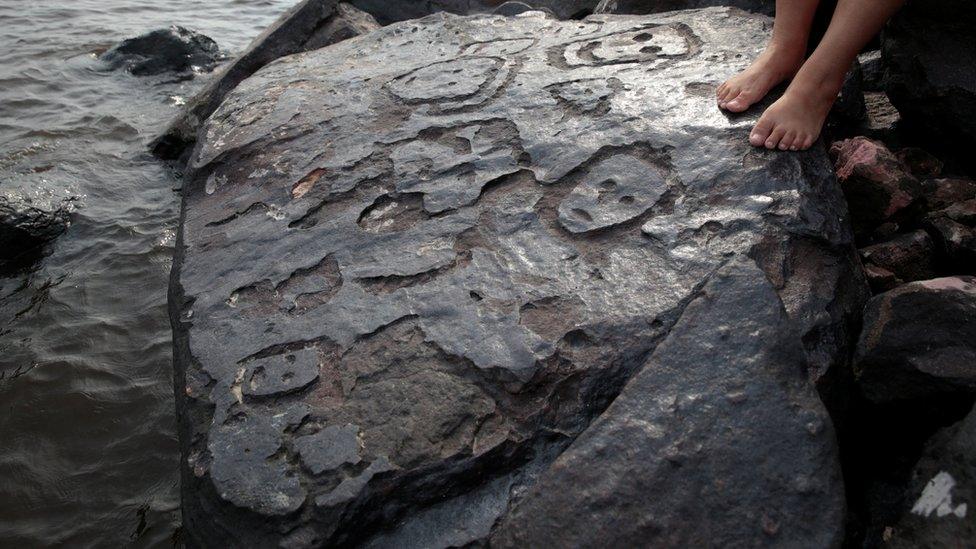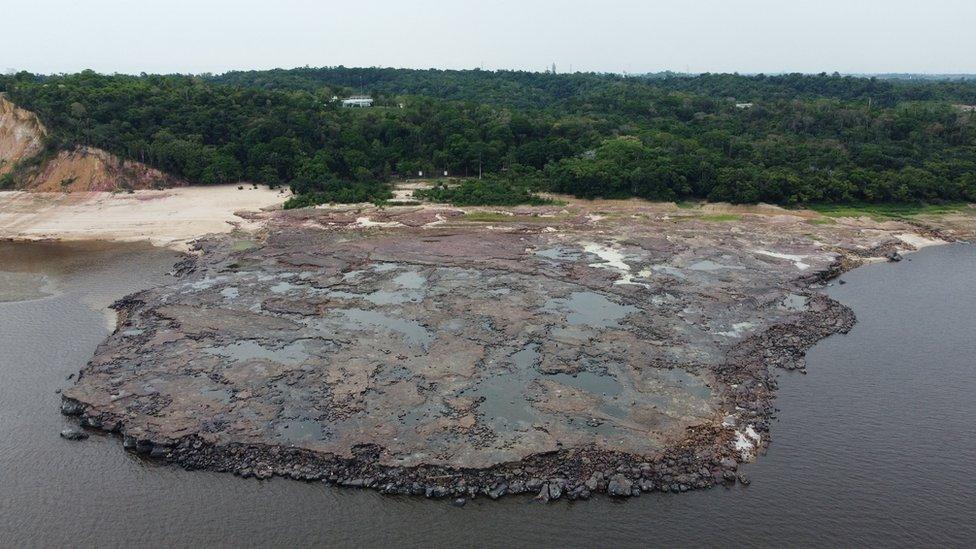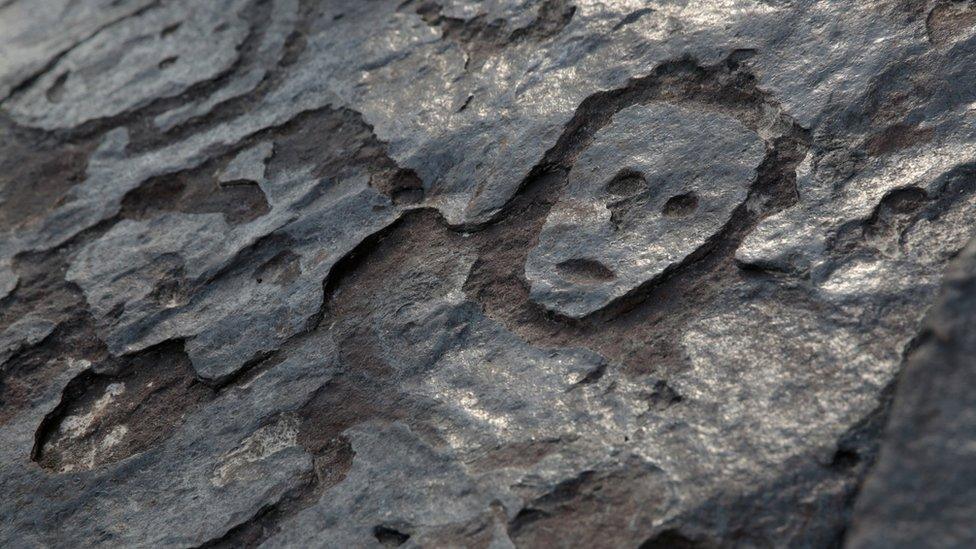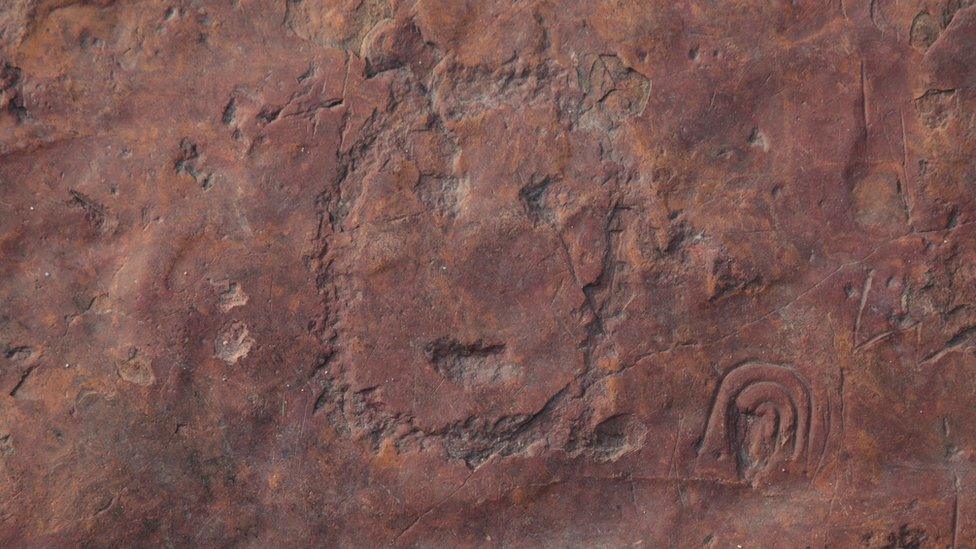Drought reveals ancient rock carvings in Brazil
- Published
- comments

Lots of pictures of people's faces were found in the stone
Stone carvings that are thousands of years old have been discovered along a riverbank in Brazil.
Animals, human faces and other figures can be seen etched onto big slabs of stone on a riverbank that were until recently hidden by water.
Due to drier than normal weather conditions, the water level in that part of the Amazon river has fallen lower than it usually is.
They're now visible along part of the Rio Negro, which is what's known as a tributary of the Amazon, which just means a smaller river that flows into a larger one.

This is the rocky shore in Brazil where the ancient carvings were found - it's an archaeological site known as Ponto das Lajes, or Place of Slabs
The markings, called petroglyphs, are estimated to be between 1000 and 2000 years old, but this is only an educated guess made by researchers based on the age of other carvings in nearby areas.
They were last spotted in 2010 when water levels dropped to 13.6 meters, but this year, the water has gone down even further.

Some of the carvings had been spotted before, but more have since been discovered as the water level has fallen
In fact, it's dropped below 13 metres for the first time.
Scientists say this is due to an unusually dry season, as a result of a weather pattern called El Niño.
El Niño makes global weather warmer
It happens when water in the Eastern Pacific heats up more than normal, and creates unusually hot and stormy weather
El Niño is declared when the water warms up by half a degree Celsius higher than the long term average

Here you can see what looks like some sort of animal
This has caused even more markings to be seen - as well as people and animals, there are pictures of bodies of water, and some grooves in the rock suggest tools were made at the site.
Carlos Augusto da Silva, a researcher at the Federal University of Amazonas found 25 carvings that he thinks were used as a whetstone, which is something used for sharpening tools.
